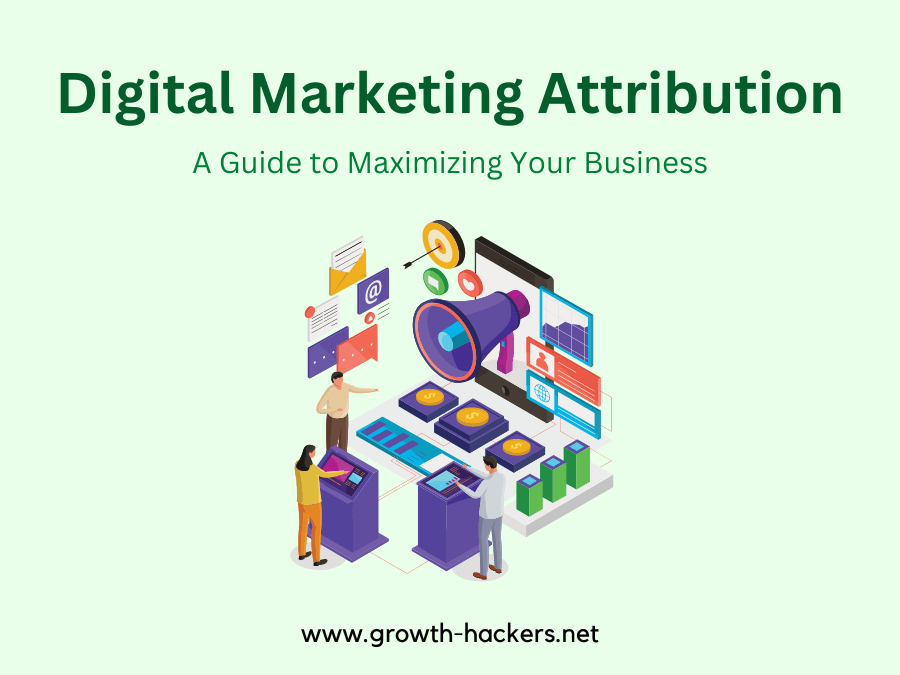Marketing attribution helps you determine the most effective channel for a given audience interaction. While this may seem like a no-brainer, many marketers struggle to determine attribution accurately.
Typically, marketers apply a single attribution model to all of their specialist channels. However, this overlooks that some channels may be a higher priority than others for a given audience.
For example, if you have decided not to have a strong paid media presence, you should attribute conversions to channels such as SEO and content marketing.
Unless you have a strong paid media strategy, including social and PPC, you should keep attribution to natural channels like this. Finding out which channels convert the most visitors will help inform your strategy moving forward.
Digital marketing attribution is an incredibly powerful tool that can revolutionize your business. However, many digital marketers don’t understand how it works and aren’t using it to its fullest potential.
In this blog post, we’ll take a look at digital marketing attribution and explain how you can use it to maximize your marketing efforts. Let’s get started!
What is Digital Marketing Attribution?
Digital marketing attribution is the process of determining how different digital marketing activities (such as website visits, app downloads, or social media engagements) contribute to a brand’s overall marketing efforts.
The goal is to provide a comprehensive view of how a digital marketing campaign is performing, so that decisions can be made about where to allocate resources next. Attribution can be done manually or automatically, and it can be used to analyze both web and app-based campaigns.
There are a few key factors that need to be considered when attributing digital marketing activities: the channel, the ad, the landing page, and the conversion event. Each plays a different role in conversion rates, and it’s important to track each one to make informed decisions about where to focus your efforts next.
How to Implement Digital Marketing Attribution?
Digital marketing attribution is the process of allocating credit for conversions and other desired outcomes to the touchpoints in the customer journey that drove them. In other words, it’s a way to determine which marketing activities are most effective in driving results, and it’s an essential part of any effective digital marketing strategy.
There are a number of different attribution models that can be used, and the best one for your business will depend on your specific goals and objectives. Some of the most popular attribution models include last-click, first-click, linear, and time-decay. To implement digital marketing attribution, you’ll need to first decide which attribution model you’re going to use. Once you’ve done that, you’ll need to set up tracking for all of your marketing activities and ensure that your data is being properly collected and attributed.
Once you have your attribution model and tracking in place, you can start to analyze your data and see which marketing activities are most effective in driving results. From there, you can adjust your strategy accordingly and continue to optimize your digital marketing efforts.
Do you want to leverage the power of digital marketing attribution for your business?
Contact Growth Hackers
5 Tips to Optimize Digital Marketing Attribution for Your Business
Digital marketing attribution can be complicated, but it’s important to get attribution right. After all, how can you make data-driven decisions if you don’t measure everything? Here, we’ll take a look at 5 tips to Optimize Digital Marketing Attribution for your business. Let’s get started!

1. Define Your Business Goals
As a business owner, it is important to have a clear understanding of your goals. Your goals will help to guide your business decisions and keep you on track.
Some things to consider when defining your business goals:
- What are your long-term goals for your business?
- What are your short-term goals for your business?
- What are your personal goals for your business?
- What are your financial goals for your business?
- What are your marketing goals for your business?
- What are your sales goals for your business?
It is important to have realistic and attainable goals. Once you have defined your goals, you can start to create a plan to achieve them.
2. Select The Right Attribution Model
There are a number of different attribution models that organizations can choose from in order to attribute credit for conversions and other key metric data. The most common attribution models are last-click, first-click, and linear. However, there is no one-size-fits-all solution when it comes to attribution modeling, and the best attribution model for your organization will depend on a number of factors, including your organization’s specific goals and objectives, the type of product or service you offer, your sales cycle, and your customers’ purchase journey.
When choosing an attribution model, it is important to keep in mind that no model is perfect, and each has its own advantages and disadvantages. For example, last-click attribution gives credit to the most recent touchpoint prior to a conversion, and while this can be helpful in determining which touchpoints are most likely to result in a sale, it does not give credit to other touchpoints that may have played a role in the customer’s decision-making process.
The best way to decide which attribution model is right for your organization is utilize digital advertising intelligence to experiment with different models and track the results. Try different models for different products or services, and see which ones result in the most sales. You may also want to consider using a combination of attribution models, depending on the specific goals and objectives of your organization.
3. Understand Customer Journey
In order to understand the customer journey, businesses need to map out the steps that a customer takes from awareness to purchase. By understanding the customer journey, businesses can identify opportunities to improve the customer experience and increase conversions.
The customer journey typically starts with awareness, where the customer becomes aware of a need or want. They then enter the consideration phase, where they research options and compare different products or services. Once they have made a decision, they enter the purchase phase, where they make the final purchase. Finally, they enter the post-purchase phase, where they may use the product or service and provide feedback. By understanding the customer journey, businesses can identify pain points and opportunities to improve the customer experience.
For example, if a customer has a negative experience during the purchase phase, they may be less likely to purchase from the company again. Alternatively, if a business can make the purchase process smoother, they may be able to increase conversion rates. Mapping out the customer journey is an essential first step for any business that wants to improve its customer experience.
By understanding the steps that customers take from awareness to purchase, businesses can identify opportunities to make improvements that will lead to increased conversion rates and happier customers.
4. Set up Tracking and Measurement
Setting up tracking and measurement tools is essential to any online marketing campaign. By utilizing tracking tools, we can see which strategies are working and which ones need to be improved. There are many tracking and measurement tools available, but some of the most popular ones are Google Analytics, KISSmetrics, and Mixpanel.
Google Analytics is a free tool that provides a wealth of data about your website traffic with lead attribution capabilities, conversion goals setup and much more. It can show you where your visitors are coming from, what they’re doing on your site, and how long they’re staying. This information can be extremely valuable in optimizing your website and marketing campaigns.
No matter which tracking and measurement tools you use, they’re only as good as the data you put into them. Make sure to take the time to set up your tracking correctly and you’ll be well on your way to understanding your online marketing campaign’s performance such as Google Advertising.
Implement digital marketing attribution for your business today!
5. Analyze and Optimize
website content and structure In order to ensure that your website is visible to search engines and easy to navigate for users, it is important to analyze and optimize your website’s content and structure. Here are a few tips on how to do this:
1. Conduct keyword research to identify the terms that users are searching for when looking for websites like yours.
2. Use those keywords throughout your website, including in the titles and headers of your pages, as well as in the body text.
3. Structure your website in a logical way, using clear titles and descriptions for each page.
4. Make sure your website’s code is clean and well-organized.
5. Regularly update your website’s content to keep it fresh and relevant. By following these tips, you can help improve your website’s visibility and usability, both for search engines and for users.
The Challenges of Digital Marketing Attribution
When it comes to attribution, there are a few challenges that many digital marketers face. Here are a few of the most common ones:
1. Difficult to measure
Attribution can be a difficult task for digital marketers, and it is a challenge that many face.
One of the main challenges is that attribution is often difficult to measure. You can’t simply track how many clicks a piece of content received and call it a day – you need to understand what influenced those clicks.
Second, attribution is often subjective. What one person would consider as a positive action might not be seen that way by another person. For example, if you’re promoting a piece of content and you see a big spike in traffic, you might think that the content is doing well. However, your colleague might see the spike in traffic and think that you’re promoting the content too heavily.
Third, attribution is often based on assumptions. For example, you might assume that people who visited your website because of a piece of content are likely to be longtime customers. However, that might not be the case – people who visit your website might be interested in your product, but they might not be customers yet.
In short, attribution is a difficult task, but it’s an important one for digital marketers. If you can’t measure it, you can’t improve it.
2. Difficult to track over time
Attribution is the process of determining who or what is responsible for the success or failure of a marketing campaign. It can be a challenge to track attribution over time, especially when the campaigns are run on digital platforms.
One of the major challenges with attribution is that it can be difficult to determine who actually created the content, designed the product, or created the ad. Additionally, it can be difficult to track the financial impact of a campaign over time. This is especially true when digital campaigns are run on platforms like social media or email marketing.
One way to overcome these challenges is to use attribution modeling techniques. These techniques help identify the drivers of a campaign’s success or failure and track them over time. This information can then be used to determine who was responsible for each success or failure.
3. Attribution can be difficult to communicate to stakeholders
When communicating the effectiveness of digital marketing campaigns, it can be challenging to ensure that all stakeholders are accurately attributing the success of the campaign to the digital team. This is often a challenge that digital marketers face, as it can be difficult to objectively measure the success of a digital marketing campaign.
One way to overcome this challenge is to use case studies as evidence of the success of a digital marketing campaign. By using case studies, you can provide evidence that is easy to understand and can be easily communicated to all stakeholders. This will help ensure that everyone involved in the campaign is accurately attributing the success to the digital team.
4. Difficult to justify the costs associated with it
Attribution can be a challenge for many digital marketers. It’s often difficult to justify the costs associated with it when there are so many other marketing channels that are potentially more effective.
However, when done effectively, attribution can provide valuable insights that can help your marketing efforts. It can help you understand how your users are interacting with your content and ads, which can help you improve your targeting and advertising efforts. Moreover, attribution can help you determine the effectiveness of your content and ads, which can help you make informed decisions about future marketing investments.
So, while attribution can be expensive, it’s worth it to ensure that your campaigns are as effective as possible.
Case Studies of Digital Marketing Attribution
A number of case studies have been conducted on digital marketing attribution, and the results can be very enlightening.
Here are three examples of how businesses have used attribution to improve their marketing efforts and drive better results:
- A travel company used attribution to understand the customer journey and identify the most important touchpoints. The company found that the vast majority of customers started their journey on search engines, and that the first click was the most important in driving conversions. Based on this, the company focused its efforts on optimizing its search engine listings and running ads on search engines. This resulted in a significant increase in bookings.
- An ecommerce company used attribution to understand the impact of different channels on sales. The company found that email marketing was the most effective channel in driving sales, followed by organic search and paid search. Based on this, the company focused its efforts on these three channels and saw a significant increase in sales.
- A B2B company used attribution to understand the impact of different marketing activities on the sales cycle. The company found that the most effective activities were those that happened early on in the sales cycle, such as webinars and ebooks. Based on this, the company focused its efforts on these activities and saw a significant increase in sales.
Digital marketing attribution can be a very powerful tool for businesses, and these case studies show just how effective it can be. If you’re not already using attribution, now is the time to start.
Future of Digital Marketing Attribution
In the future, digital marketing attribution will become more sophisticated and nuanced. Marketers will have access to more data than ever before, and they will be able to use that data to more accurately attribute results to specific marketing activities.
Attribution models will become more sophisticated, taking into account a wider range of factors such as customer lifetime value, customer journey, and customer engagement. Marketers will be able to use attribution data to optimize their marketing budgets and allocate resources more effectively. As digital marketing attribution evolves, it will become an increasingly important tool for marketers. Those who are able to use it effectively will have a significant competitive advantage.
I hope this article has helped you see how attribution can help you maximize your customers. If you have any questions about attribution, please reach out in the comments below!
Growth Hackers is a leading digital advertising agency helping businesses from all over the world grow. There is no fluff with Growth Hackers. We help entrepreneurs and business owners implement digital marketing attribution, increase their productivity, generate qualified leads, optimize their conversion rate, gather and analyze data analytics, acquire and retain users and increase sales. We go further than brand awareness and exposure. We make sure that the strategies we implement move the needle so your business grow, strive and succeed. If you too want your business to reach new heights, contact Growth Hackers today so we can discuss about your brand and create a custom growth plan for you. You’re just one click away to skyrocket your business.









1 Comment
While running PPC campaigns can generate immediate traffic and visibility for businesses, it is essential to go beyond just running ads.